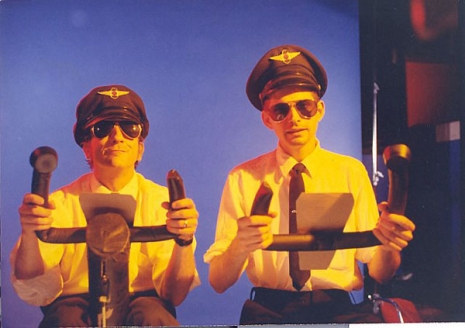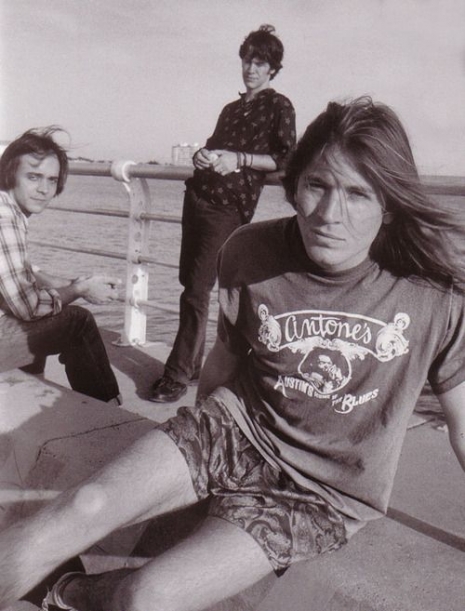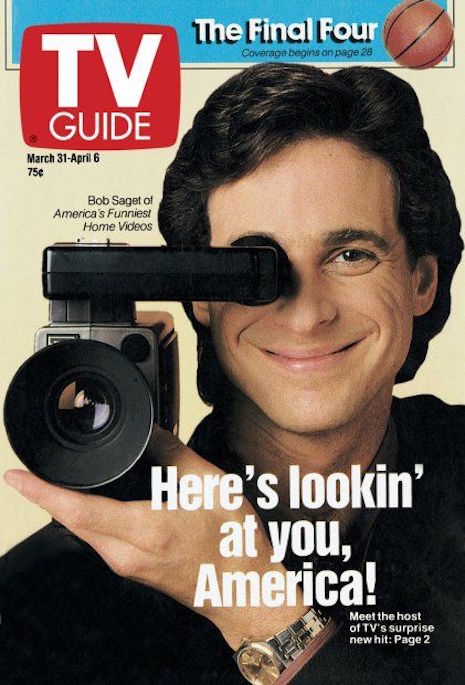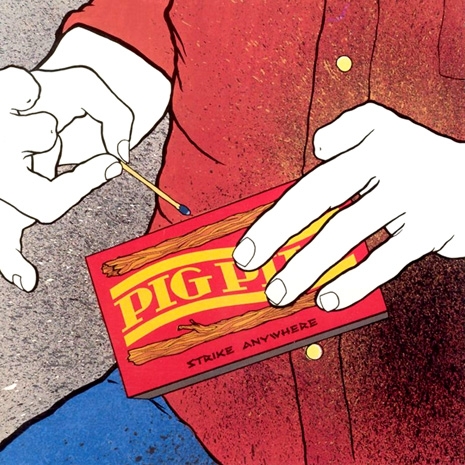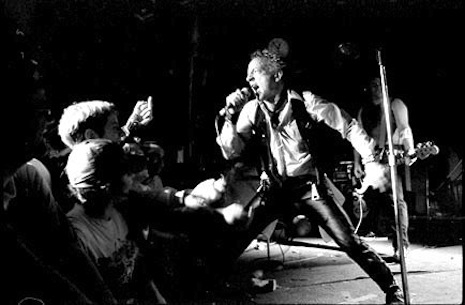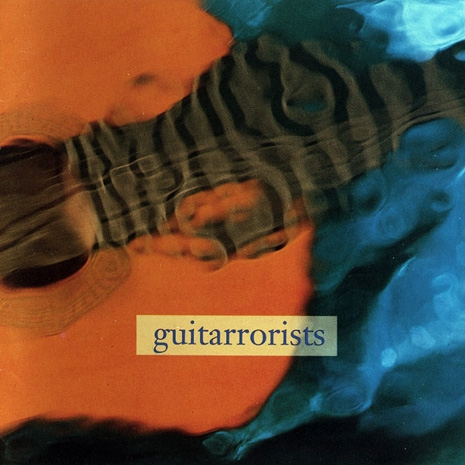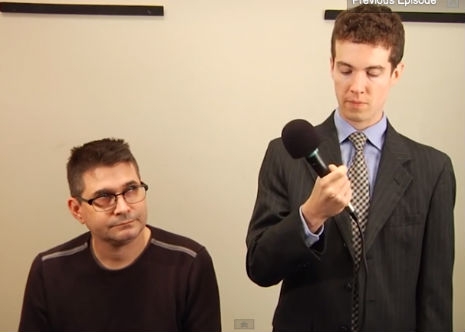
When it was originally founded by Mark Fischer (along with his pal Rob Syers), Chicago’s SKiN GRAFT was a purveyor of underground/DIY comics and low-brow punk ‘zines ethos. Conceived and furiously drawn by the pair, Fischer’s and Syers’ comics were sold at punk shows in St. Louis, at high schools during lunch, and local comic and record shops. Thanks to several characters they created, such as “The Zeppelin Patrol” a group of outer space hippies (lovingly inspired by one of the kings of underground comics, the creator of The Fabulous Furry Freak Brothers, Gilbert Shelton), “Serious Brown” (best described as a private dick in Muppet form), and “Hot Satan” (who is still proudly represented in the labels logo), SKiN Graft would soon catch the attention of comics giant Caliber Press. At the time, Caliber was considered one of the largest publishers of indie comics in the U.S., and published two issues of SKiN GRAFT, distributing them worldwide before SKiN GRAFT decided to switch gears and try their hand at putting out records. Their first, with St. Louis, Missouri math rock band Dazzling Killmen, combined both aggressive punk rock jams with, of course, comics, for a 7” split in 1991 with Minneapolis spaz-punk band Mother’s Day.
Jumping to 1995 would see the SKiN GRAFT release SIDES 1-4, the first installment in a series of singles and comic book sets featuring bands performing songs “influenced” by AC/DC. Artists on the four-song record included Shellac (formed by Steve Albini and drummer Todd Trainer with the former bassist for the Volcano Suns, Bob Weston), Brise-Glace, Big’n, and Chicago-based noise rock band, U.S. Maple. The release included “crossover” comics—think Batman vs. The Beatles (issue #222, 1970), or one of my personal favorites, the comic collision of Star Trek and the X-Men, in 1996. Instead of having the comics included in SIDES 1-4 directly associated with AC/DC, Fischer and Syers instead hit up their comic catalog, resurrecting Hot Satan, Johnny Oedipus, and Serious Brown in new comics. According to Fischer, the idea for SIDES 1-4 was also inspired by the noise put out by Rene Herbst and his label Gasoline Boost Records in Germany (which included Big’n).

Tail Spins #19 (December 1994/January1995). Here Fischer and Syers paid homage to one of the very first comics owned by Fischer, Captain America #203 while homaging the great Jack Kirby. This image is a part of the digital comics released today with ‘SIDES 1-4.’
SIDES 1-4 was only produced on vinyl, and noise-loving music fans consider the album a highlight of their record collection. Starting on June 5th and coinciding with Bandcamp’s June “fee-waving day,” SKiN GRAFT will give fans a chance to digitally download a newly remastered SIDES 1-4, various comic sets and a limited number of 7” vinyl copies. All this talk about Hot Satan, AC/DC, and loud, rowdy punk rock got me, an AC/DC lifer, wondering about how some of the creative minds got behind this project, and how they got their first dose of a band beloved by everyone. I mean, have you ever met a person who didn’t like AC/DC? I know I never have. Here’s how U.S. Maple guitarist Todd Rittman, Bob Weston, SKiN GRAFT’s Mark Fischer remember the first time they had their young minds blown by Australia’s greatest export, AC/DC:
Todd Rittman:
“I remember when Highway to Hell (1979) came out. I was 10 and just starting taking an interest in rock music. My best friend had an older brother who would play us his records, and I remember having my mind totally blown forever by AC/DC, Black Sabbath, and Led Zeppelin. The sound of the guitars and tribal drums, Bon Scott’s voice, and how truly happy he was to be doomed to eternal damnation all really impressed me. All I ever heard growing up was the Beatles and Simon and Garfunkel. Hard rock brought a whole new palette of colors to my brain. I used to go to a record store called The Flip Side that was within walking distance of the townhouse I grew up in, just look at the LP covers and plan which ones I would spend my money on (once I ever got any). I probably spent the most time looking at the cover of If You Want Blood You Got It (1978) wondering what kind of deranged criminal mind would think of such an image (and actually wondering if it was real!) I’ve never been the same.”
Bob Weston:
“I first heard AC/DC every morning from a boombox that the leather-vested burnouts blasted on the bus to junior high school in 1977. I loved it. Maybe it was “Dirty Deeds”...?”
Mark Fischer:
“I felt the same way as Todd! AC/DC’s cover art seemed a lot seedier and more dangerous than their contemporaries. The album cover of Highway to Hell scared me in all of the right places. I knew my parents would not approve, but it was irresistible - like low hanging forbidden fruit.”
So as we’re all nodding in agreement about Fischer, Weston, and Rittman’s feelings on AC/DC, I have more good news regarding upcoming plans to expand on SKiN GRAFT’s musical exploration and experimentation of/with AC/DC. More covers are planned for the forthcoming SIDES 5-6 such as “Let There Be Rock” by the thunderous Zeni Geva (Japan), and everyone’s favorite AC/DC sing-along about a ding-dong’s two best buddies, “Big Balls” by Palace Contribution (featuring Will Oldham aka, psilocybin connoisseur Bonnie “Prince” Billy). All four songs from SIDES 1-4 can be cranked all the way up below and purchased right here while you scroll through a few of the fantastic accompanying comics in all their delinquent glory.

An assortment of SKiN GRAFT comic characters.

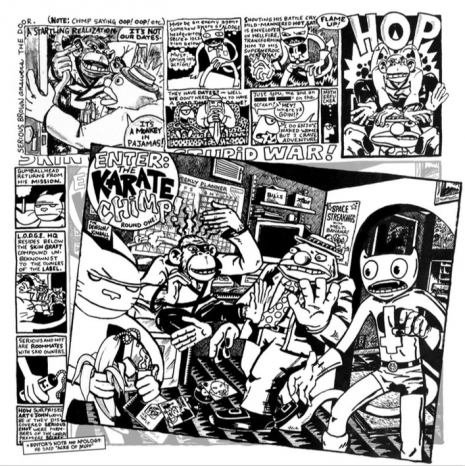
ENTER THE KARATE CHIMP!

A promotional ad for ‘SIDES 1-4.’
HT: With thanks to Mark Fischer and Ron Kretch.
Previously on Dangerous Minds:
‘Anyone here tonight ever had gonorrhea?”: AC/DC’s dirty autobiographical version of ‘The Jack’
‘How Should We End This?’: Hilarious supercut of AC/DC song endings
AC/DC vocalist Brian Johnson’s balls out metal vocals for a Hoover vacuum commercial in 1980
Blistering footage of a young AC/DC blowing the roof off the sucker in 1978
Heavy Metal Parking Lot: Photos of AC/DC hanging with a bunch of teenage super-fans in 1979
Knives Out: When Ozzy (maybe) stopped Geezer Butler from stabbing Malcolm Young of AC/DC in 1977
Raw footage of AC/DC killing it at an Australian high school 40 years ago (& Bon Scott’s bagpipes!)
Ultra-rare AC/DC promotional songbook full of sheet music, comics & photos from 1976






